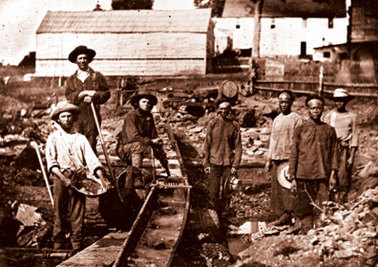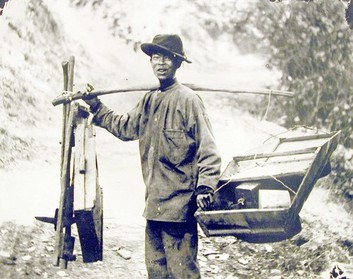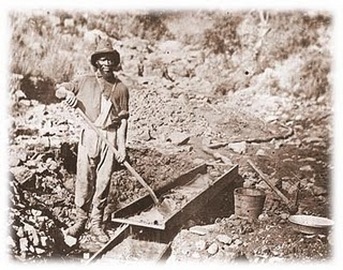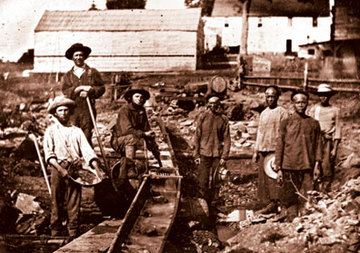Migrational Impacts
The California Gold Rush resulted in a massive wave of immigration to California from all over the world. The immigrants came from almost every area of Europe, Asia, and the Atlantic. They were accepted by almost everyone at first, and were accepted under the laissez-faire military administration of Richard Barnes Mason. However, as land, gold, and other resources became harder to find, a group of white racists began to set up barriers for these immigrants and influenced the government to abandon laissez-faire and adopt the Foreign Miners Tax, which made their stay in America, a much more challenging one. Some foreigners left. However, many others chose to stay persistent. Those that did stay are the foundation of the magnificent cultural diversity seen in California today.
One of the races that shaped California the greatest were the Chinese. About 23,000 of the immigrants were from China. The Chinese were welcomed everywhere and were wanted by everyone as laborers, carpenters, and as cooks, since the restaurants they established were well patronized. They usually worked on the fields that were already given up on by Americans, and usually worked in bands of fifty to avoid being attacked by racist groups. Because burglary was common at the mining sites, the Chinese developed a technique that they used to melt gold and turn them into ordinary household items, like pots. This technique included covering the gold in soot, to hide its true identity, then melting the gold later at their homes. Most of the Chinese that gave up on mining, went to help build the Transcontinental Railroad. Other than railroad building, other Chinese people found jobs as cooks, cigar makers, restaurant owners, farmers, fortune tellers, merchants, temple founders, gambling hall managers, theater workers, laundry workers, and became a vital importance to the agricultural advancements later on.
African-Americans also played a key part in changing the United States with the opportunities they found at the California Gold Rush. They fought against both conventional and unconventional Eastern stereotypes by gaining large financial successes. Most African-Americans, however, came as slaves and bought their freedom with gold. Free African-Americans used their gold to buy and free other slaves. Gold was also used by them to fight discrimination, start newspapers, build schools, and start churches. Eventually, so many African-Americans were free and economically active that slavery was banned in California.
Mexicans had been greatly affected by the California Gold Rush before they had a chance to affect the Gold Rush themselves. Many Mexicans lost their land once Mexico lost California to the United States in their defeat of the Mexican-American War. The Mexicans that immigrated to California in 1848 were in numbers of two to three thousand and often traveled in entire families. By 1849, there were an estimated six thousand Mexicans mining for gold. The Mexicans found that in California, a place that had so recently been their home, they were now considered foreigners.
The Irish had been migrating to California long before gold was even discovered. The first major Irish immigration wave to California was when the famous Irish Potato Famine occurred in 1845. Once the California Gold Rush started, the Irish populations in San Francisco reached 4,200, and by 1880, it had flourished to thirty thousand, which was about thirty-seven percent of San Francisco's population. Many of the Irish that weren't working in the mines became politicians of both the city and the state of California. The Irish also started their own businesses and newspapers. John Sullivan started the Hibernia Savings and Loan and the Hibernia Housing Society, which was made for the sole purpose of helping immigrants settle by giving them loans to buy land and homes. Sullivan bought two lots near Dupont Square to donate to the Catholic Church and the building of the Old St. Mary's Cathedral.
There is no doubt that immigration left a major mark in California that is still visible today. Whether it was through big or small waves, business or government, immigration is what shaped the state into what it is today. It was the foundation of the California we know now.




